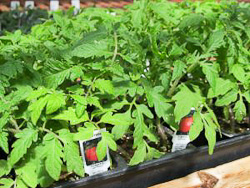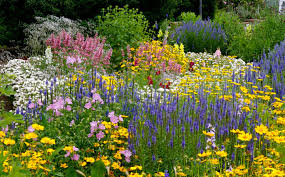In the Colorado Springs area there’s about 5 months of frost-free growing (less if you garden at higher elevations). For many vegetable garden crops, that’s enough time from sow to harvest, provided no foul storms or wildlife damage intervenes. With tasty, nutritious and bountiful success comes the urge to gain more on the returns, so begins the search for season extenders.
Adding frost protection allows a gardener to start the crops earlier, supplement another crop rotation and/or harvest later into fall. It also gives a window of opportunity for long season crops to come into fruition like beefsteak tomatoes. Extending the growing season doesn’t necessarily mean that heat is added, it can mean the plants don’t freeze. Often the temperatures hold high enough to begin gardening before the last frost date. But all it takes is one rogue night to reset the start date for that year. That’s where a buffering insulation adds assurance against damage or death.
Commercially available covers are used over the young plants early in the year to prevent frost while the roots anchor in. Those are usually left on until the chance of frost is past. Something as simple as a five-gallon bucket can be used to gain the same results but should be taken off during the day to allow ventilation and sunlight.
Placing something with mass (like a large rock or clear gallon jug of water) next to a plant can absorb heat by day and might be able to fend off the cold morning temperatures until sunlight comes. Develop that idea a little more, using stacked timbers or black painted cinder blocks and there’s combined heat retention and protection from cold winds. Broaden the resources more and a south facing building or wooden fence becomes ideal for sun exposure, heat buildup and wind protection. Since most fences are permeable, any solid lining on the fence can prevent cold air seepage by night.
Implement a structure that can support plastic from the vertical wall and a cold frame is built! Plastic covering will slow the heat loss or prevent the damaging freezing temperatures. Use clear plastic to transmit light through providing the “greenhouse effect”. Black plastic will absorb the heat but doesn’t transmit that energy. The idea is to gain sun energy in the object(s) under the plastic, be it plants, soil and /or water jugs.
Growing structures come in many different shapes, sizes and materials. Beyond durability, the most important considerations are access: for watering; ventilating; and harvesting. Once the footprint of the garden is decided the structure can be built from there. Wood, plastic sheets and rebar are the most accessible for a “do-it-yourselfer”. The plastic sheeting should be UV resistant and at least 20 mil thick. Sometimes a local nursery/greenhouse will recover their roof and the old roof can be re-used for the hobby greenhouse.
Raised beds offer a base structure for a hoop house. Within the wood frames, PVC piping can be anchored onto rebar shunts that have been pounded into the ground. A central wire can connect the hoops horizontally so the structure doesn’t waffle under a snow load. Plastic can be draped over the structure and tightened down with wood slats, clamps or whatever. Once the growing season has been established the plastic can be replaced with chicken wire or hardware cloth to curtail hail damage. In the fall the plastic can go back on to stretch more harvest out of the year. Greenhouse structures can be simple or complex- depends on the budget and dependence on the productivity. (Click here to learn about “Greenhouse Energy Conservation” – a book written for building a serious greenhouse structure)
There’s nothing quite like walking into the humid, quiet, growing stillness of a warm greenhouse, no matter how big or small. Select a site that will maximize sunlight hours. As for greenhouse size, framing material, cover material and utility there are so many different variables and options that all the details cannot be covered here yet are easy to research. The covering is critical for sunlight allowance but the side material can be made from other, ideally more insulated materials, even dirt. Glass, UV Plastic or Lexan are used with equal plant growing success. All can succumb to hail and age but they have differences in longevity, insulation and pricing. The exterior of the frame supports the outside covering and the inside of the frame can have another layer (of plastic) to buffer heat loss, and can stay on to filter sun penetration during the summer. Should the summer sun cause damage, a shade cloth may be suspended from the interior of the frame. Heat buildup during the summer months may warrant ventilation either passively (doors and windows) or mechanically (fans). Farm supply companies offer gadgets and equipment that can be useful and fun like heaters and fans and even a thermostat/ timer so the heater and/or fan will run only at certain times. Flooring can be many different materials i.e., landscape fabric, bricks, tiles or the garden itself. Hardware cloth under the garden or flooring can deter some of the burrowing animals (for a while). Again, budget and personal preference plays a big role in the planning. As beneficial as a greenhouse is for plants, so it is for the organisms that live on those plants. So watch out for critters and insects!
Each year has different challenges to offer from temperatures to snow fall to bugs. What works for one gardener may not for another, but it sure is fun to share and compare stories. Use a calendar and thermometer to record useful information and not just guesses. Make notes in a gardening journal to record your successes, failures and lessons and you might be able to push the boundaries a little further next year.


